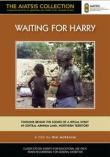AustLit
Latest Issues
AbstractHistoryArchive Description
'Djunawunya, Arnhem Land, east of the town of Maningrida, July 1978. Frank Gurrmanamana is responsible for preparing the final mortuary ceremonies for his brother who had died six years before. The brother had been buried in Maningrida, but now his remains are being brought back to his home country.'
'Central to the ceremonies is Harry Diama, the senior blood-relative of the deceased man, but Harry lives in Maningrida and is pre-occupied with a pending court-case there involving his son. He is needed to approve each step of the preparations, and is also pivotal in bringing other people to the event, including “men of importance” for the dancing.'
'Harry’s continuing absence puts huge pressure on Frank and upon all of the others who must wait at the ceremonial site, including Les Hiatt, Franks’ old anthropologist friend. Harry is also aware that the film crew is waiting to record the event: “These filmmakers work for us. We’ll see it here … our own film. We’ll all be in it.”'
'Painting of emblems on the hollow-log coffin proceeds, sand sculptures are made, with Frank expressing his constant concern that it all “looks good for the film”.'
'Men from Cape Stewart, an area with cultural and traditional trade links to the dead man’s clan, are also needed to make the ceremony work, and further tension surrounds their response to the painting of the coffin.'
'As the day for the ceremony’s climax draws near, Frank grows ever more anxious about the non-arrival of Harry and the people he is supposed to bring.'
'When Harry finally arrives, the final stage of the ceremony is permitted to begin and, though normally performed at night, it is successfully performed in daylight for the benefit of the camera. In the end, Frank’s responsibilities are fulfilled and he speaks with great satisfaction about the film: “This film is mine. Now men everywhere will see my sacred emblems … These emblems I hold so dear are now on a film, so the film is also dear to me. It was my idea to bring these film makers. All is now finished … and I am filled with pride.”' (Source: Ronin Films website)
Notes
-
Ronin Films wishes to advise Aboriginal and Torres Strait Islander people that this
film may contain images and voices of deceased persons.
Publication Details of Only Known VersionEarliest 2 Known Versions of
Works about this Work
-
form
y
 The MacDougall Tapes
Andrew Pike
,
Mitchell
:
Ronin Films
,
2017
11433482
2017
single work
film/TV
interview
The MacDougall Tapes
Andrew Pike
,
Mitchell
:
Ronin Films
,
2017
11433482
2017
single work
film/TV
interview
'These extended conversations with David and Judith MacDougall represent an invaluable archival record and convey a wealth of ideas and information relating to their experiences as a highly influential ethnographic filmmaking team.
'The conversations cover their years with the Film Unit of the Australian Institute of Aboriginal Studies, Canberra, 1975-1987. During this time, the MacDougalls made a series of eleven documentary films, many of them acknowledged world-wide as landmark achievements in ethnographic cinema. These films included TAKEOVER (1979), THE HOUSE-OPENING (1980), THREE HORSEMEN (1982), SUNNY AND THE DARK HORSE (1987) and LINK-UP DIARY (1987). The MacDougalls discuss their approach to filmmaking and the circumstances of making each film. They also reflect on their body of work from the perspective of today, and discuss the work of other filmmakers who worked for the Film Unit, notably Kim McKenzie with films such as WAITING FOR HARRY (1980), and the work of Indigenous filmmakers Wayne Barker and Oomera (Coral) Edwards.' (Publication summary)
-
form
y
 The MacDougall Tapes
Andrew Pike
,
Mitchell
:
Ronin Films
,
2017
11433482
2017
single work
film/TV
interview
The MacDougall Tapes
Andrew Pike
,
Mitchell
:
Ronin Films
,
2017
11433482
2017
single work
film/TV
interview
'These extended conversations with David and Judith MacDougall represent an invaluable archival record and convey a wealth of ideas and information relating to their experiences as a highly influential ethnographic filmmaking team.
'The conversations cover their years with the Film Unit of the Australian Institute of Aboriginal Studies, Canberra, 1975-1987. During this time, the MacDougalls made a series of eleven documentary films, many of them acknowledged world-wide as landmark achievements in ethnographic cinema. These films included TAKEOVER (1979), THE HOUSE-OPENING (1980), THREE HORSEMEN (1982), SUNNY AND THE DARK HORSE (1987) and LINK-UP DIARY (1987). The MacDougalls discuss their approach to filmmaking and the circumstances of making each film. They also reflect on their body of work from the perspective of today, and discuss the work of other filmmakers who worked for the Film Unit, notably Kim McKenzie with films such as WAITING FOR HARRY (1980), and the work of Indigenous filmmakers Wayne Barker and Oomera (Coral) Edwards.' (Publication summary)
- Maningrida, East Arnhem Land, Arnhem Land, Top End, Northern Territory,
- 1978



